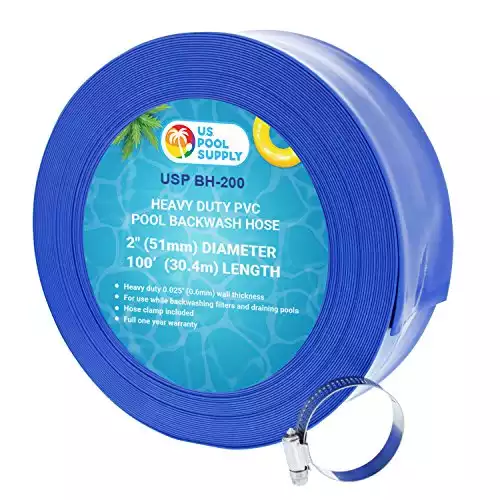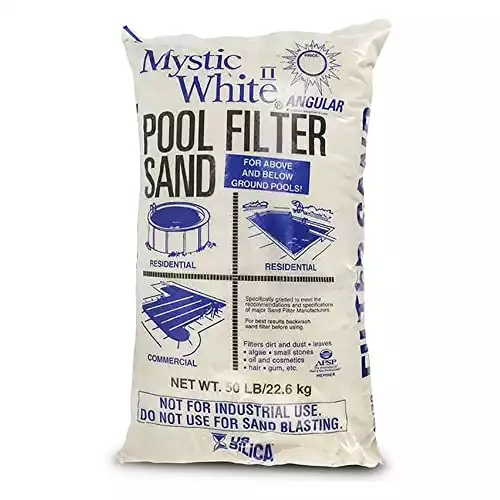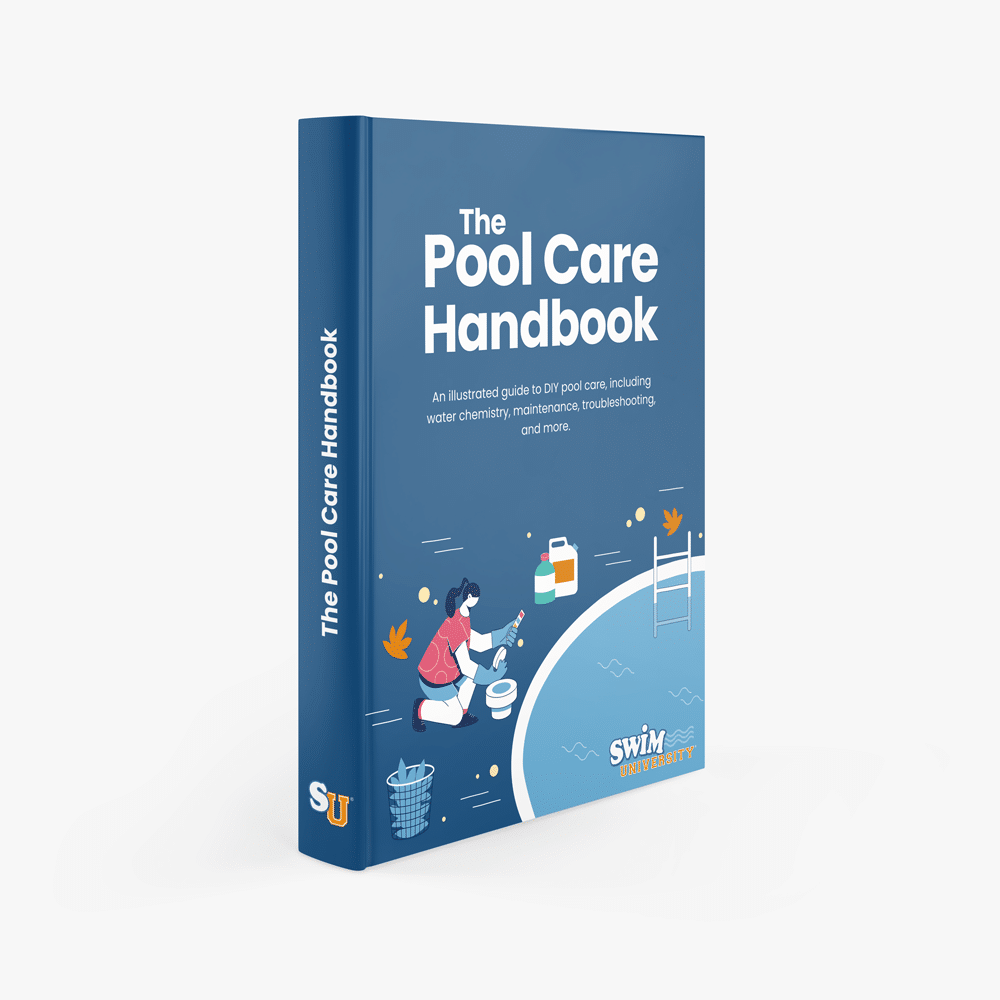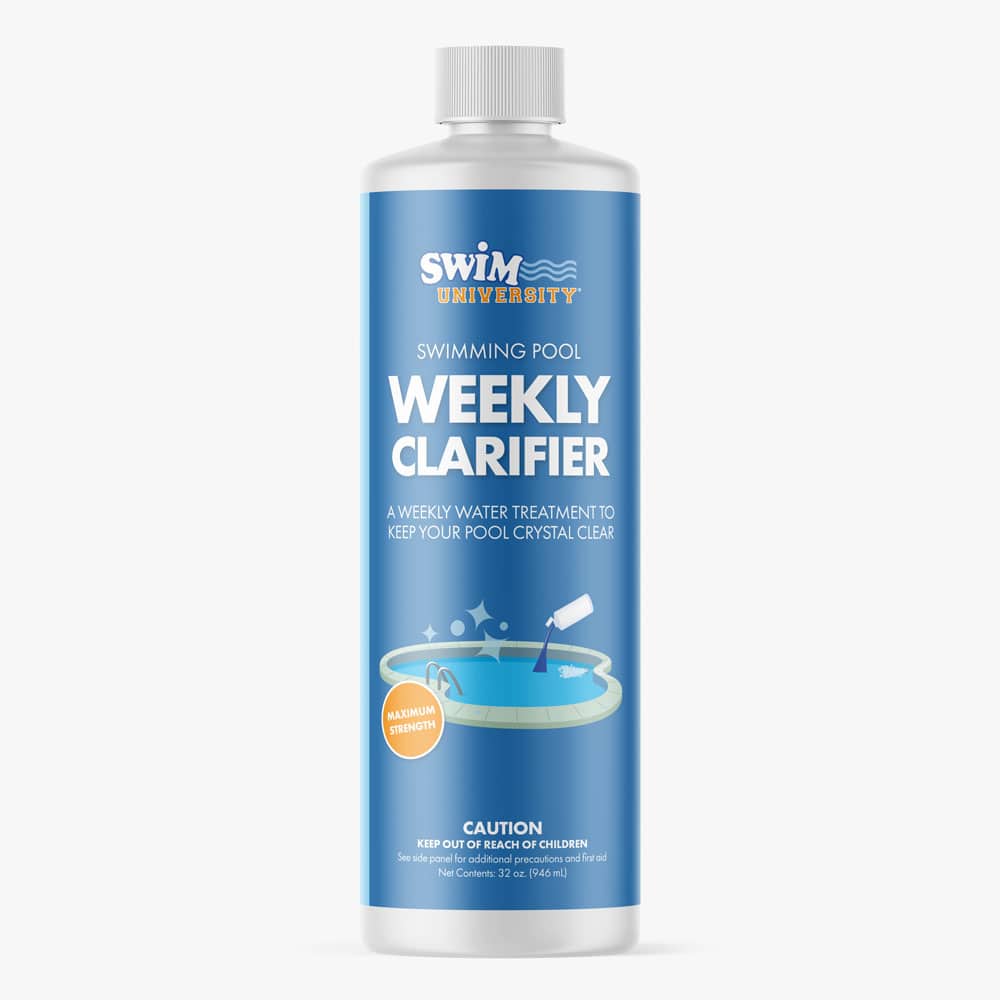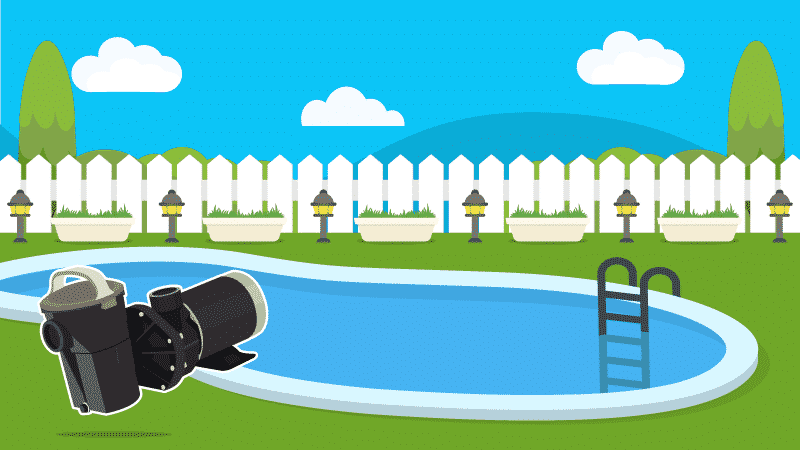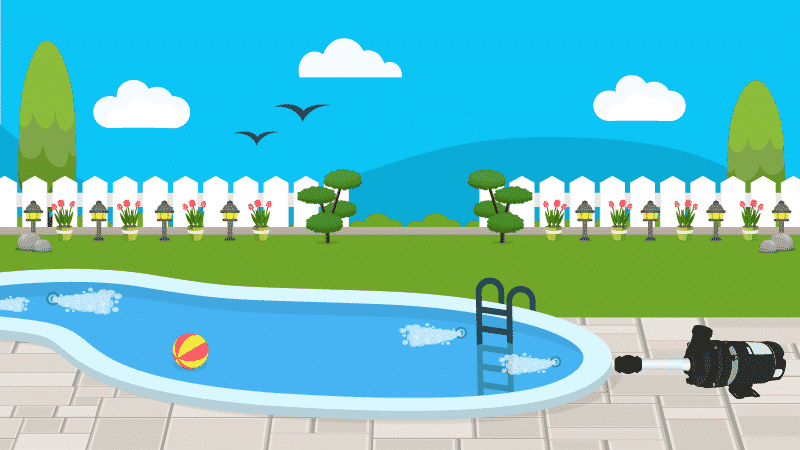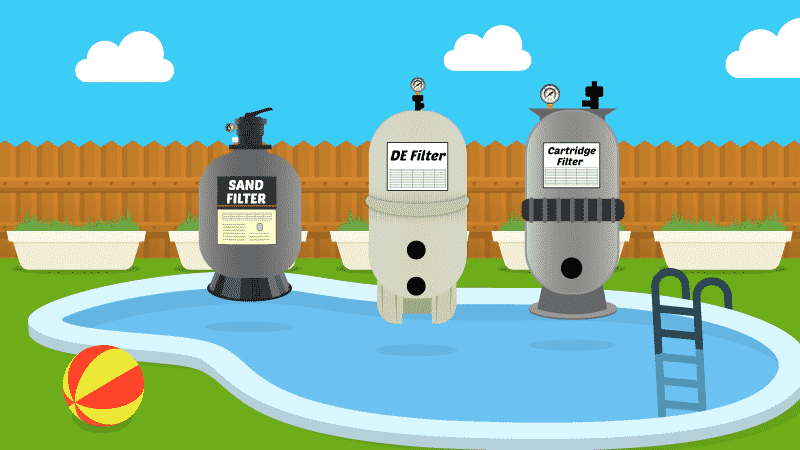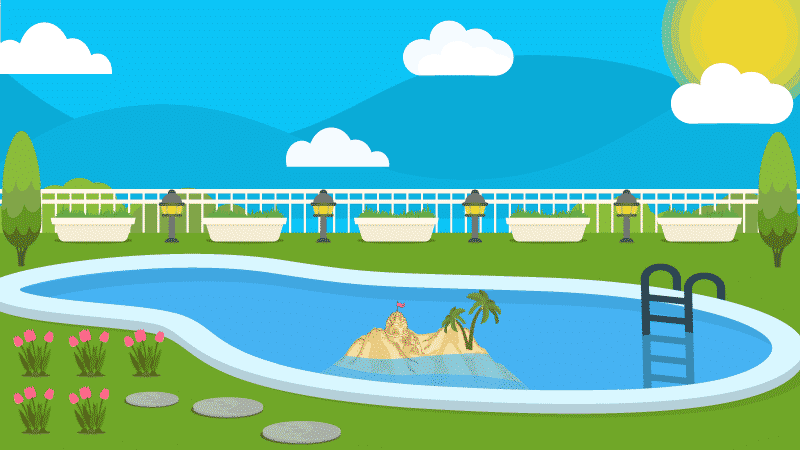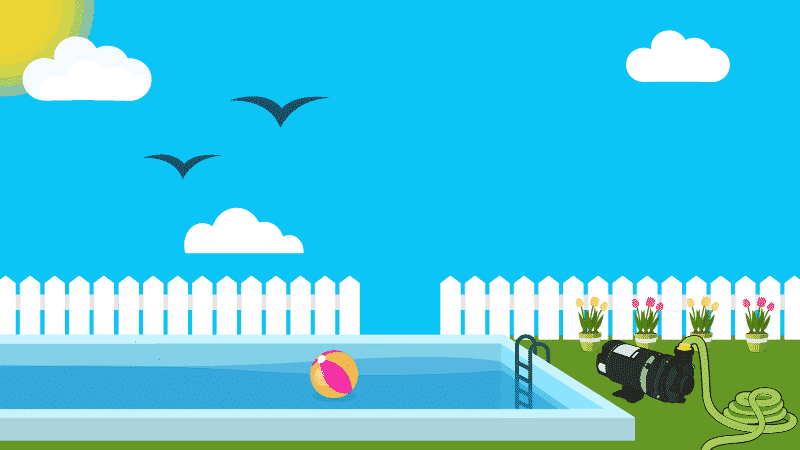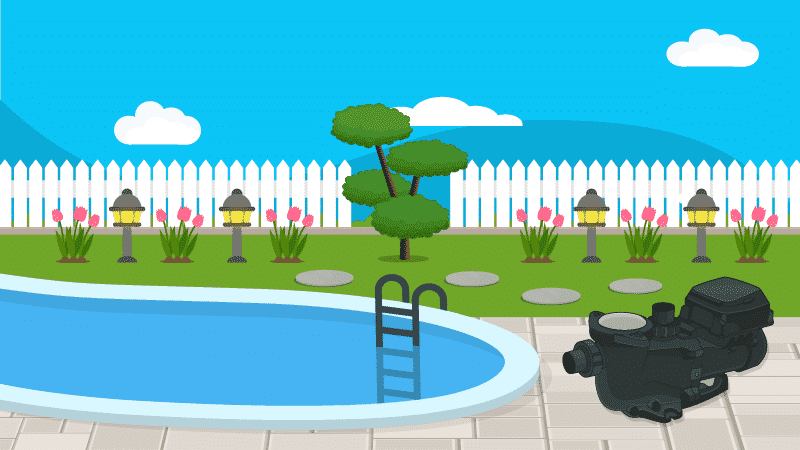Backwashing a sand filter is an essential part of pool maintenance. But how often do you need to backwash? And how do you actually do it?
Backwashing reverses water flow to remove contaminant buildup in your sand filter. And it’s a simple process of connecting a backwash hose to your filter and using the backwash setting to send water from your pool through your filter and out the waste port. In general, you should backwash your filter if the filter gauge pressure reads above 10 PSI or you notice a weak flow of water out of your return jets. But you’ll need to backwash more often if you have an algae-infested pool or you’ve just used a pool flocculant.
Check out the video tutorial below or keep reading for a step-by-step guide on how to backwash your sand filter.
What is Backwashing?
As water regularly passes through your sand filter, it leaves behind dirt, debris, and other contaminants in the filter medium or sand. Over time as water flows through, that filter medium will become clogged. And that can reduce your filter’s effectiveness.
When you backwash, you’re sending water backward through your filter and out your filter’s waste port or drain port. This forces all the debris caught in the filter medium to dislodge and clear out.
You’ll need to regularly backwash a sand filter or diatomaceous earth or D.E. filter, but you do not need to backwash if you have a cartridge filter.
By the way, if you need more help understanding your filter and keeping your water clean and clear, check out our Pool Care Video Course.
Cut the confusion with our easy-to-use video course. Save $1,000's on pool care and keep your water clean and clear for good!
Learn MoreWhen to Backwash a Sand Filter
In general, you should backwash your filter when your filter pressure rises 10 PSI above normal running pressure or if you notice poor flow from your return jet.
Take note of the pressure gauge reading when you first set up your filter or right after you backwash. That’s your normal operating filter pressure. When the pressure gauge reads 10 psi or more above normal, it’s time to backwash.
Just make sure you don’t want to backwash too frequently. When there’s a little build-up in your filter, it actually helps capture tinier bits of debris. A clean filter is good. A slightly dirty filter is better. But a clogged filter is bad and needs backwashing.
You’ll also need to backwash if you’ve recently filtered out a lot of debris, contaminants, or dirty water. If your filter is running after cleaning up an algae bloom or after a heavy storm, you’ll need to backwash. It’s also a good idea to backwash your filter after you’ve vacuumed your pool or if you’ve used a pool flocculant.
How Do You Know if Your Sand Filter is Clogged?
Here are a few ways to tell if your sand filter is too dirty and it’s time to backwash.
Filter Pressure is 10 PSI Above Normal
If you notice that your sand filter’s pressure gauge reads 10 PSI or more over its baseline, it’s time to backwash. You can find your filter’s normal operating pressure by looking at your pressure gauge after backwashing.
Low Water Flow from Return Jets
If you notice low water flow out of your return jets, it’s a sign you need to backwash. Generally, when the flow rate drops, you’ll see an increase in PSI, and may even see cloudy water.
Cloudy Pool Water
If your water isn’t as clear as it usually is, or you can see visible debris in the water that the filter should have removed, that can be an indication your sand filter isn’t filtering effectively.
After Heavy Rain or Debris Load
If a large amount of dirt or debris gets into your pool water, like after a big rain storm, you’ll need to backwash after clearing out the debris with a skimmer net and a manual vacuum or after shocking your pool water.
How to Backwash Your Sand Filter Step By Step
The backwashing process is easy, but following the right steps in the right order will help you avoid filter damage and get your filter system as clean as possible.
And before you run your filter, make sure your pool’s water level is halfway up the skimmer or higher, since you’ll be losing pool water in the process. Finally, to backwash, the only extra supply you’ll need is a backwash hose.
When backwashing your pool filter, use this easy-to-roll up and store backwash hose.
- Turn the filter system off. Then remove the skimmer basket, especially if it’s full of debris.
- Attach the backwash hose to filter waste port. This is also known as the waste line or backwash port. Your backwash hose will have a lot of water flowing out of it, so be sure the end is placed in an appropriate spot.
- Turn your multiport valve to the Backwash position. Then turn the filter system back on. Water should be flowing out of the backwash port and through the hose.
- Let the water run for about one minute, or until the water runs clear. Check the water clarity coming out of the end of your backwash hose or check your filter sight glass.
- Turn your filter system off and turn the filter valve from Backwash to Rinse. This will help remove sand from your lines before the water flows back into your pool. If you don’t have a Rinse setting, use the Waste setting.
- Turn your filter system back on and rinse the filter for about 30 seconds.
- Turn the filter system off and turn the multiport valve to the Filter setting. You can now turn the system back on and run it regularly.
- Refill, test, and balance your pool water as necessary. The backwash process removes water from your pool and you’ll need to rebalance your chemicals.
Note: Make sure your filter is off before turning your filter valve into a new position. Moving the filter valve handle while the filter is on or while water is flowing can damage the multiport valve handle gasket.
What if Backwashing Didn’t Work?
If you’re still experiencing signs of a dirty sand filter, it’s time to re-evaluate:
- Check all your pool chemical levels to make sure something else isn’t causing cloudy water, like your pH or calcium hardness.
- Check for damage to your sand filter. If your sand filter is very old or very cheap, you could have a cracked lateral inside the sand filter tank. Or your need your entire filter may need replacing.
- Check the rest of your pool plumbing system for clogs or leaks. If you have low return jet pressure, you could have a leak or clog in the pressure side of your pool.
If you’re still experiencing pressure problems, be sure to check out our Pool Filter Pressure Troubleshooting Guide.
How Often Do I Need to Change the Pool Filter Sand?
You will need to change the pool filter sand every three to five years. And you’ll know it’s time to change the sand in your filter if the water is dirtier than usual and the sand is clumped together or greasy.
Our perfectly sized pool filter sand filters out insects, leaves, dirt, dust, sunscreen oiled, hair & other small particles to keep your pool sparkling clean. This pool filter sand is specifically designed to meet the standards for all brands of pool filters.
Laterals are the bars of star-shaped section at the bottom of the sand filter. With time, regular wear and tear and pressure from the sand may cause them to break. And if you have a broken lateral, your filter’s efficiency will suffer.
Frequently Asked Questions About How to Backwash a Sand Filter
Need more help backwashing a sand filter? Here are some common questions and answers.
How often should you backwash your sand filter?
You should backwash a pool filter when you notice the filter pressure running 10 PSI above normal, cloudy water or if you notice low water flow coming from your return jets. For more information, check out our video on How Often Should You Backwash a Pool Filter.
What’s the difference between backwash and rinse?
Backwash sends water in the opposite direction through the filter. Rinse sends water through the same in the same direction as normal filtration. The Rinse setting clears dirt from the clean side of the sand before sending it back to the swimming pool.
Do you backwash or rinse a sand filter first?
Backwash the filter, then rinse the filter afterward to prevent blowback into the pool. The backwash setting flushes contaminants built up in the sand. And the rinse setting resets the sand to its original position for the best filtration.
How long do I rinse my sand filter after backwashing?
Rinse your filter for at least 30 seconds after backwashing. Otherwise, you could risk blowing sand back into your pool through your return jets.
Does backwashing remove water from the pool?
Yes, a certain amount of water loss is unavoidable when you backwash. But you can reduce the amount of water you lose by closely monitoring the clarity of the water as it comes out of the waste line and stopping the process as soon as it runs clear.
How do I backwash my above ground pool sand filter?
Your above ground sand filter should have the same settings as any other sand filter, including backwash and rinse. If you don’t have these settings or you don’t have a waste port, you may have a cartridge filter instead. If you have a smaller filter like an Intex sand filter, you may want to do your backwashing in rounds. Backwash for one minute and then rinse for one minute. Repeat this cycle for 3 rounds to avoid blowing anything back into the pool.
Need More Pool Maintenance Help?
- Download our free Pool Care Cheat Sheet. It’s a free, easy-to-use guide to help you keep track of taking care of your pool.
- Subscribe to our Swim University YouTube Channel. We publish free video tutorials throughout the pool season.
- Check out our Pool Care Course. You’ll get 30+ step-by-step videos and a downloadable guide with everything you need to know about pool maintenance.


